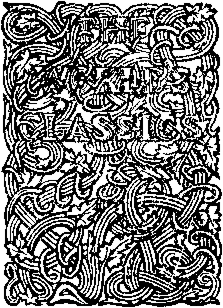SOPHOCLES
THE
SEVEN PLAYS IN ENGLISH VERSE
LEWIS CAMPBELL, M.A.
EMERITUS PROFESSOR OF GREEK IN THE UNIVERSITY OF ST. ANDREWS
HON. FELLOW OF BALLIOL COLLEGE, OXFORD

NEW EDITION, REVISED
HENRY FROWDE
OXFORD UNIVERSITY PRESS
LONDON, NEW YORK AND TORONTO
| SOPHOCLES | |
| Born at Colonos | probably 495 B.C. |
| Died | 406 B.C. |
The present translation was first published in ‘TheWorld’s Classics’ in 1906.
Siehören nicht die folgenden Gesänge,
DieSeelen, denen ich die ersten sang.
CONTENTS
- PREFACE
- PREFATORY NOTE TO THE EDITION OF 1883
- ANTIGONE
- AIAS
- KING OEDIPUS
- ELECTRA
- THE TRACHINIAN MAIDENS
- PHILOCTETES
- OEDIPUS AT COLONOS
- NOTES
PREFACE
In 1869, having read the Antigone with a pupil whoat the time had a passion for the stage, I was led toattempt a metrical version of the Antigone, and, by andby, of the Electra and Trachiniae.[1] I had the satisfactionof seeing this last very beautifully produced by anamateur company in Scotland in 1877; when Mrs.Fleeming Jenkin may be said to have ‘created’ thepart of Dêanira. Thus encouraged, I completed thetranslation of the seven plays, which was published byKegan Paul in 1883 and again by Murray in 1896. Ihave now to thank Mr. Murray for consenting to thischeaper issue.
The seven extant plays of Sophocles have beenvariously arranged. In the order most frequentlyadopted by English editors, the three plays of theTheban cycle, Oedipus Tyrannus, Oedipus Coloneus,and Antigone, have been placed foremost.
In one respect this is obviously convenient, as appearingto present continuously a connected story.But on a closer view, it is in two ways illusory.
1. The Antigone is generally admitted to be, comparativelyspeaking, an early play, while the OedipusColoneus belongs to the dramatist’s latest manner;the first Oedipus coming in somewhere between thetwo. The effect is therefore analogous to that producedon readers of Shakespeare by the habit of placingHenry VI after Henry IV and V. But tragedies and‘histories’ or chronicle plays are not in pari materia.
2. The error has been aggravated by a loose way ofspeaking of ‘the Theban Trilogy’, a term which couldonly be properly applicable if the three dramas had beenproduced in the same year. I have therefore now[page xii]arranged the seven plays in an order corresp